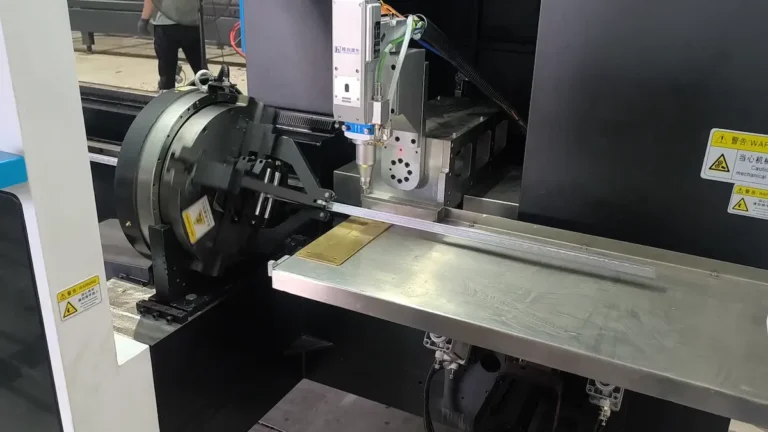Understanding the environmental requirements for laser cutting machines is crucial for responsible manufacturing. These machines can have a significant impact on air quality, waste management, and energy consumption. Adhering to regulations not only ensures compliance but also promotes sustainability. Manufacturers must consider factors like emissions control and proper disposal methods. By prioritizing these environmental standards, businesses can enhance their reputation and operational efficiency. This guide will explore essential practices and guidelines that keep your operations eco-friendly while boosting productivity.
Optimal Environmental Conditions
Temperature and Humidity Control
Maintaining optimal temperature ranges is critical for laser cutting machines. Ideal temperatures usually fall between 20°C to 25°C. This range helps ensure machine efficiency and material integrity.
Humidity levels also play a significant role. High humidity can lead to condensation, which may cause corrosion on sensitive components. Regular monitoring of humidity is essential. Climate control systems should be implemented to stabilize environmental conditions in the workspace.
Proper Ventilation Needs
Proper ventilation is necessary for safe operation. Exhaust systems must be installed to remove harmful fumes generated during cutting processes. This protects operators from exposure to hazardous materials.
Adequate airflow is crucial for maintaining a safe working environment. Operators need clean air to work effectively. Regular inspections of ventilation systems help identify blockages and ensure efficiency.
Dust and Particle Management
Dust management is vital in laser cutting environments. Using dust collection systems minimizes airborne particles that can affect health and equipment performance.
Routine cleaning schedules are important to prevent dust accumulation around machines. Implementing protective barriers can contain dust within designated areas, reducing overall exposure.
Environmental Impact of Laser Cutting
Energy Consumption Concerns
Energy-efficient models of laser cutting machines help lower operational costs. These machines use less power while maintaining performance. Energy monitoring systems track usage and optimize consumption. This data allows businesses to identify wasteful practices.
Renewable energy sources can further enhance sustainability. Solar panels and wind turbines can power laser operations. This shift reduces dependence on fossil fuels, lowering carbon footprints.
Emissions and Waste Production
The laser cutting process produces emissions that must meet environmental regulations. Regular assessments ensure compliance with local laws. Developing waste management strategies is essential for handling hazardous materials responsibly.
Minimizing emissions during operation is also critical. Optimizing cutting speeds reduces the amount of smoke and fumes generated. This approach not only protects the environment but also improves air quality.
Noise Pollution Effects
Noise levels from laser systems can impact nearby communities. Measuring these levels ensures compliance with local noise regulations. Implementing soundproofing measures reduces noise pollution significantly.
Scheduling operations during off-peak hours minimizes disturbances to surrounding areas. This practice helps maintain a positive relationship with the community.
Sustainability in Laser Cutting
Reducing Carbon Footprint
Calculating the carbon footprint of laser cutting operations helps identify reduction opportunities. Businesses can track energy consumption and emissions during production. Adopting practices that lower greenhouse gas emissions is essential. Efficient material usage significantly contributes to this goal. Staff awareness about sustainability is crucial. Training employees on eco-friendly practices can lead to better operational choices.
Minimizing Waste Generation
Optimizing cutting layouts maximizes material usage and reduces scrap. This practice ensures that every piece of material is used effectively. Staff training on techniques to minimize waste during the cutting process is vital. Employees should understand how to set up machines for maximum efficiency. Implementing a tracking system monitors waste generation. This data helps identify areas for improvement in operations.
Recycling and Reusing Materials
Establishing a recycling program for scrap materials generated from laser cutting promotes sustainability. Businesses can partner with local recycling facilities to ensure proper disposal and reuse of materials. Encouraging creative solutions for reusing leftover materials can inspire innovation. For example, leftover pieces can be repurposed into new projects or products.
Eco-Friendly Alternatives
Sustainable Material Choices
Research shows that selecting materials with lower environmental impacts is essential. Many options are available, such as recycled metals and biodegradable plastics. Prioritizing suppliers who practice sustainable manufacturing can further enhance eco-friendliness. Educating clients on the benefits of choosing eco-friendly materials encourages them to make better decisions for their projects.
Green Cutting Technologies
Advancements in laser cutting technologies play a significant role in reducing environmental impacts. Low-energy lasers are one example of innovations that enhance sustainability. These technologies consume less power while maintaining efficiency. Collaborating with technology providers helps companies stay updated on the latest green cutting solutions available in the market.
Efficient Cutting Practices
Training operators on best practices improves cutting efficiency and reduces waste. Implementing software solutions optimizes cutting paths and minimizes material usage. Regularly reviewing and updating operational procedures enhances overall efficiency. This approach not only saves resources but also lowers costs, benefiting both the environment and the business.
Final Remarks
Understanding the environmental requirements for laser cutting machines is crucial for your operations. Optimal conditions enhance performance while minimizing negative impacts. Embracing sustainability and exploring eco-friendly alternatives can elevate your business’s reputation and efficiency.
You have the power to make a difference. Prioritize these practices in your workplace to ensure a greener future. Share your insights or experiences with laser cutting’s impact on the environment. Let’s drive change together!
